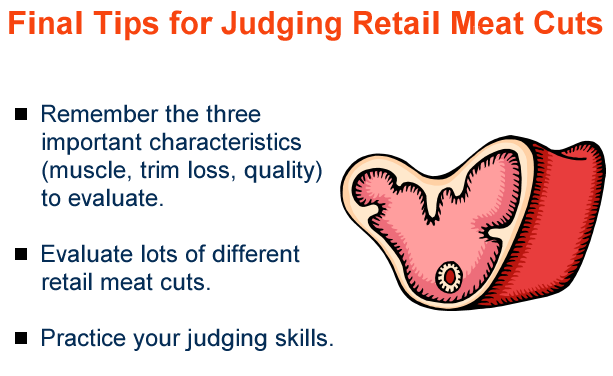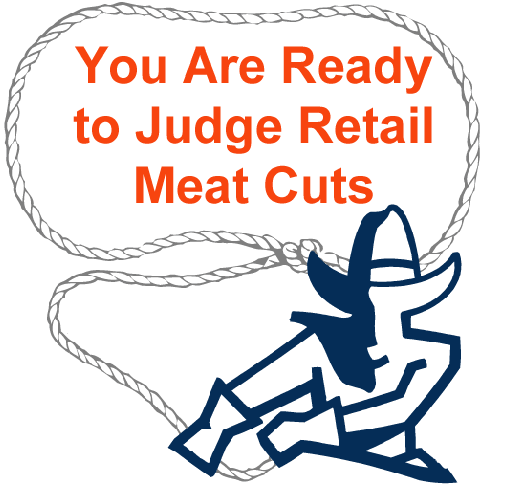Judging Retail Meat Cuts
Judging Retail Meat Cuts
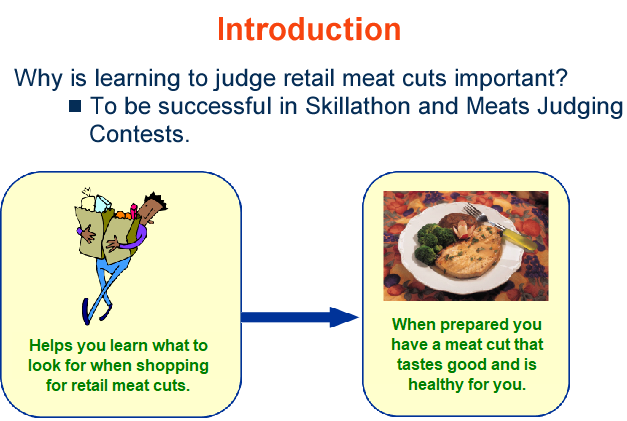
Traits to Evaluate When Judging Retail Meat Cuts
Judging retail meat cuts involves the same things that are considered when purchasing a retail meat cut to cook and eat.
- Muscling
- Trim or cooking loss (excess fat and bone)
- Quality (flavor, tender, juicy, good color, etc.)

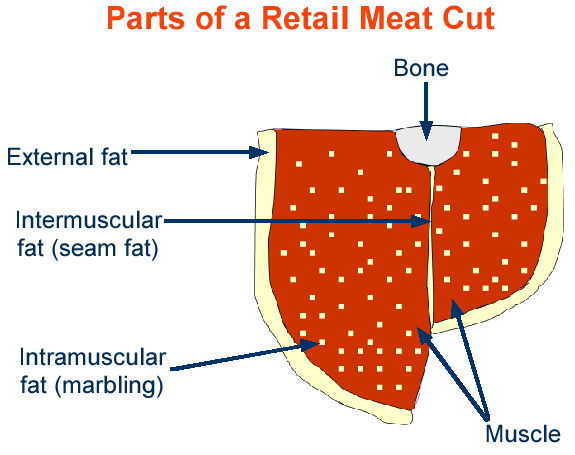
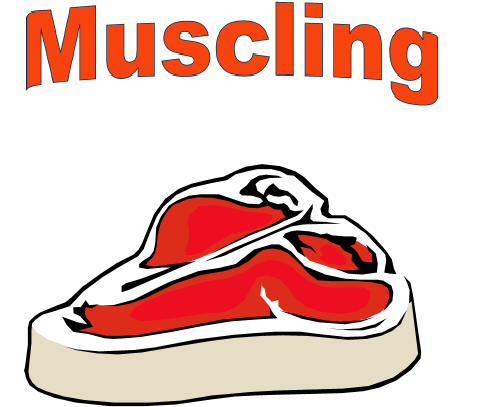
Evaluating Muscling
- The muscle in a retail meat cut is the red or pink shaded portion of the cut.
- The muscle is the most valuable part of the meat cut.
- Although some retail meat cuts may contain only one primary muscle, others will contain several different muscles.
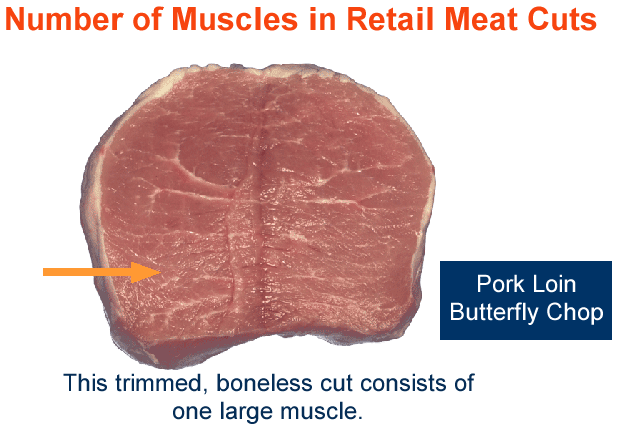
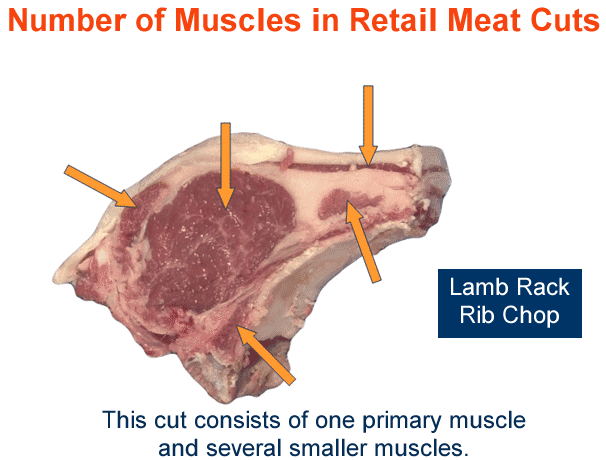
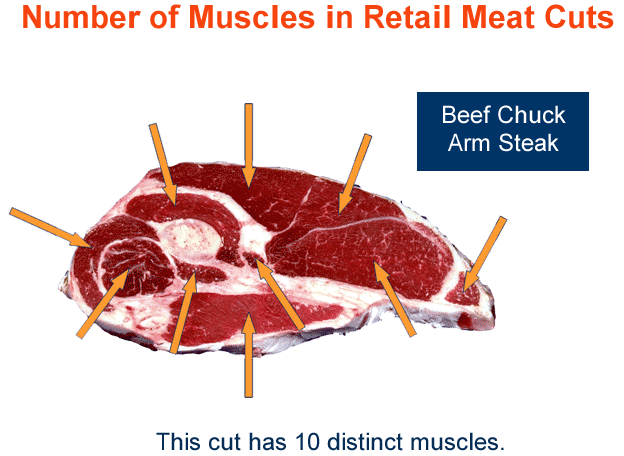
Evaluating Muscling
- No matter how many muscles are present, a good retail meat cut will have a large precentage of muscle.
- Especially when compared to the amount of fat and bone.
- When judging a class of retail meat cuts, cuts with a higher percentage of muscle are desired.
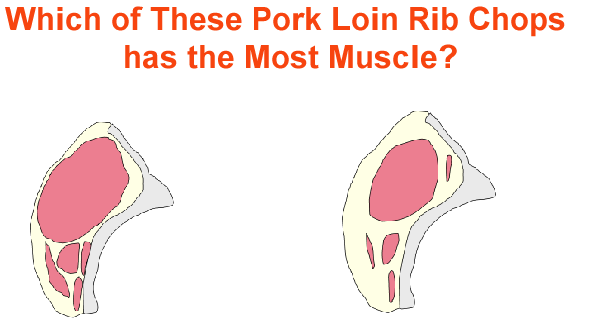

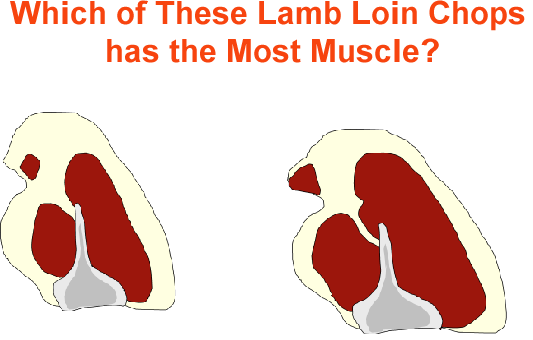

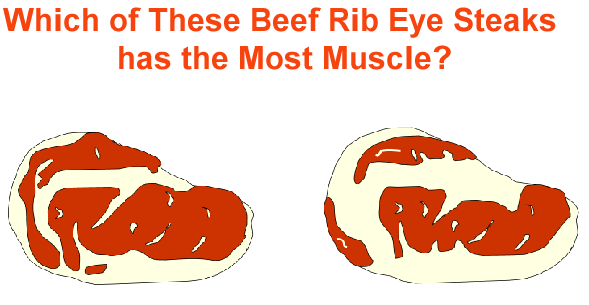


Evaluating Trim or Cooking Loss
- Trim or cooking loss refers to the amount of fat and bone that is lost as the retail meat cut is processed, cooked, and eaten.
- In judging a class of retail meat cuts, cuts with a low percentage of trim or cooking loss (fat and bone) are most desirable.
- Should have a high percentage of muscle relative to fat and bone.
Evaluating Amount of Fat
- There are three types of fat that are typically present in most retail meat cuts:
- External fat
- Intermuscular fat (seam fat)
- Intramuscular fat (marbling)
- Of these three type of fat, external and intermuscular fat are considered waste because this fat is typically not eaten.
- Intramuscular fat is considered as a quality factor, rather than as trim or cooking loss.
External Fat
- This is the fat found on the outside of a retail meat cut.
- Most of the external fat can be removed by meat cutters as the cut is processed.
- A small amount of external fat is good because it protects the outside of the meat and keeps it from drying out.
Intermuscular (Seam) Fat
- Intermuscular (seam) fat is the fat that separates muscles.
- Unlike external fat, seam fat cannot be removed by meat cutters when the cut is processed.
- Seam fat is considered to be a waste, so cuts with minimal seam fat is preferred.
- Ideally, seam fat would only be a small line of fat in the cut, not large chunks.
Evaluating Amount of Bone
- Another factor to consider when evaluating plate loss is the amount of bone.
- Since bone is not a consumable part of a meat cut, bone is considered as a waste.
- Depending on the particular cut, retail meat cuts may contain round, flat, rib, or vertebrae bones.
- Cuts with less bone are preferred.
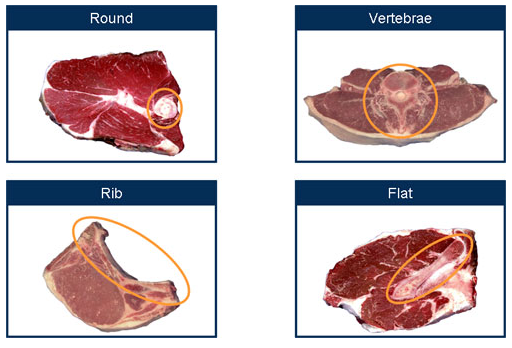
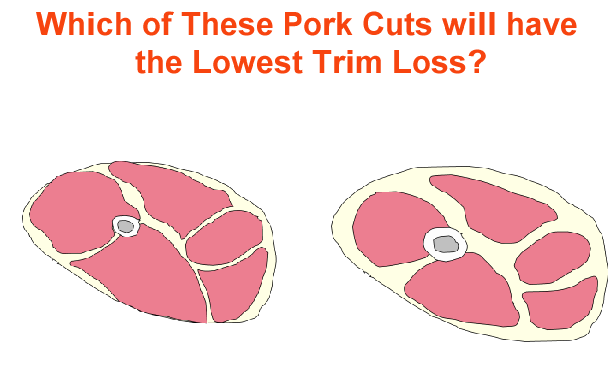
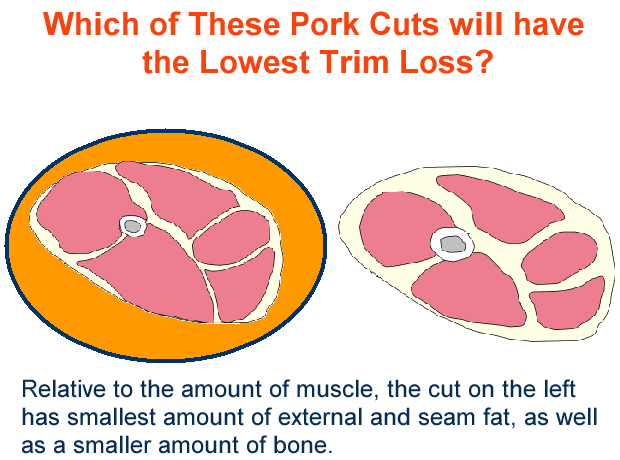
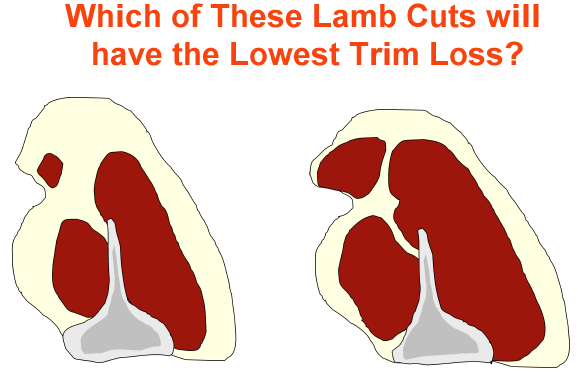
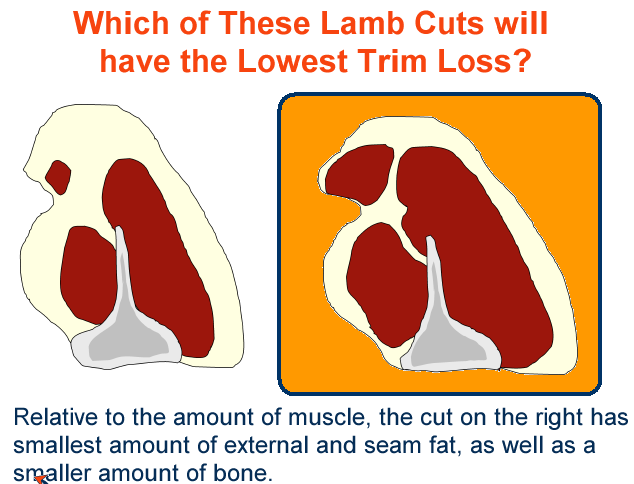
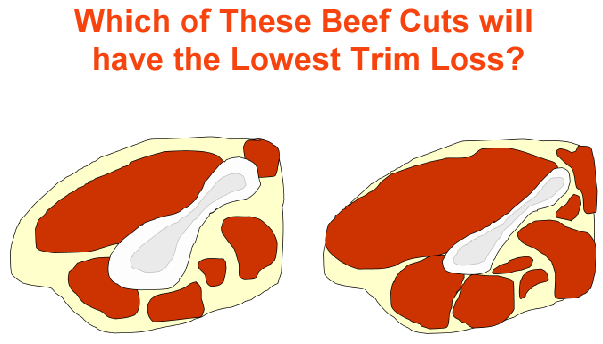
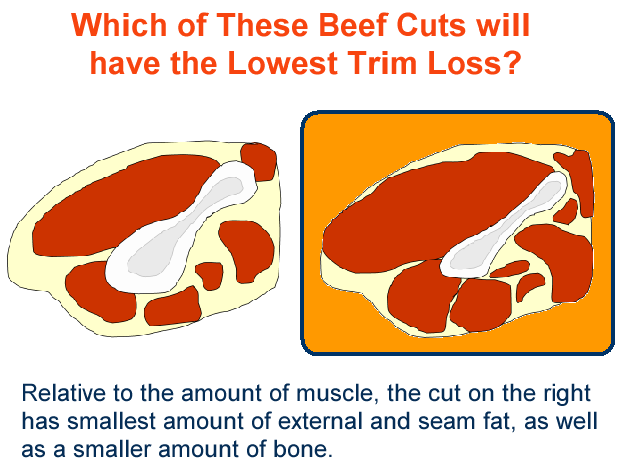

Evaluating Quality
- Quality in retail meat cuts deals with the palatability characteristics of tenderness, flavor, and juiciness, and the visual quality of the cut.
- The palatability characteristics of a retail meat cut are primarily infuenced by:
- Amount of intramuscular fat (marbling) in the cut.
- Firmness of the lean in the cut
- The visual quality of the cut is primarily influenced by the color of the cut.
Intramuscular Fat (Marbling)
- Marbling is the little flecks of fat that is found within the muscle (intramuscular fat).
- Marbling is important for:
- Flavor - marbling is referred to as the taste fat.
- Juiciness = marbling melts at cooking temperatures, and helps make cooked cuts juicy.
- Pork and lamb will typically not marble as well as beef.

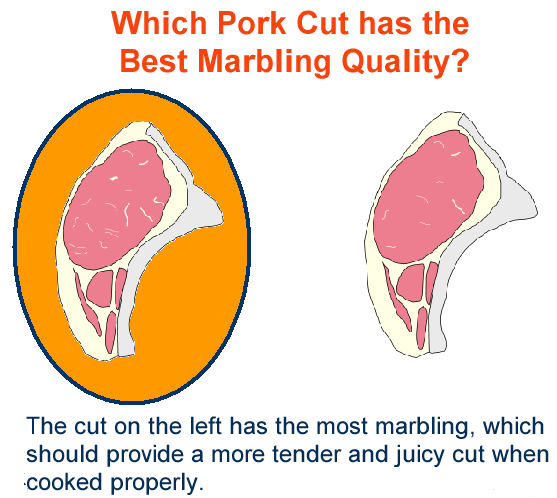


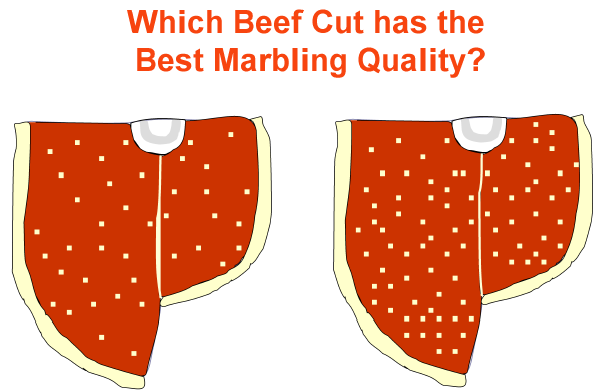
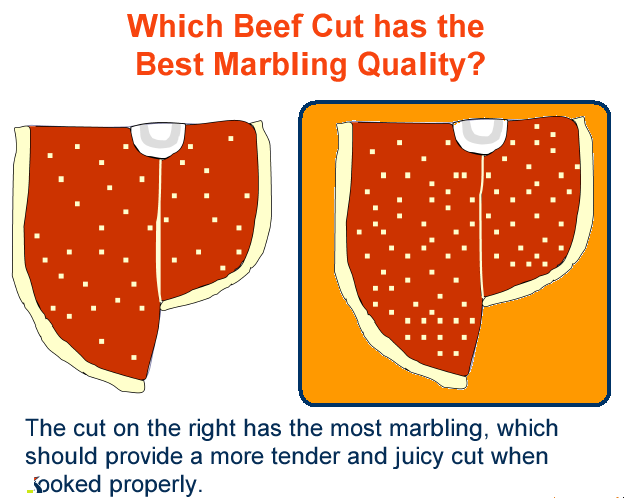
Evaluating Firmness of the Lean
- The lean in retail meat cuts should be relatively firm to the touch and should not display any obvious fluid accumulations on the surface.
- Meat cuts should be discounted if they are:
- Very soft with excess moisture on the surface or present in the packaging. These cuts will lack juiciness and be tough after cooking.
- Overly firm and dry. These cuts often have a short shelf-life, and are tough after cooking.
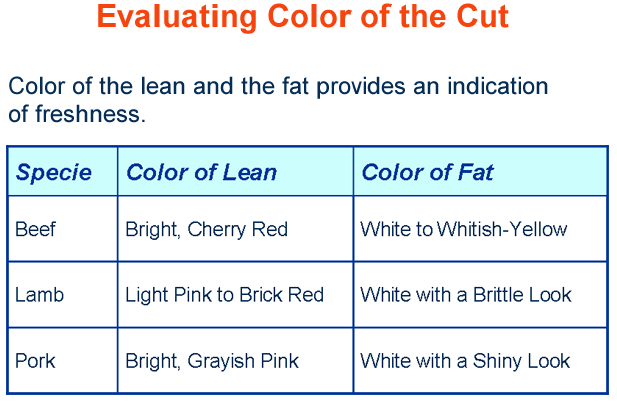
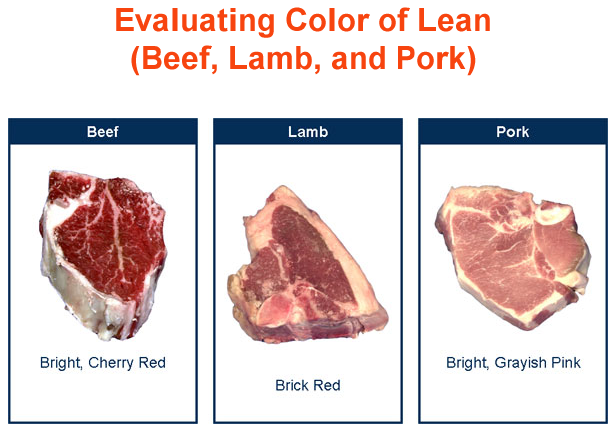
Evaluating Color of the Cut
- Dull or off colors may be an indication of:
- Aging
- Spoiling
- Poor quality control
- Poor handling of meat or animals prior to slaughter
- Meat cuts that ar overly dark or very pale in color should be discounted.


- Official Placing: 1-2-4-3
- Cuts: 3-5-2





